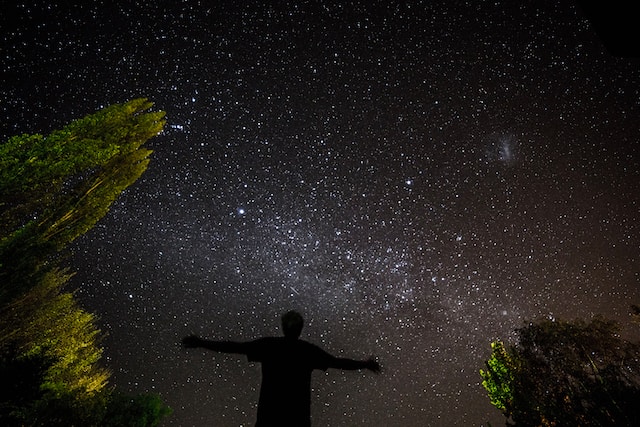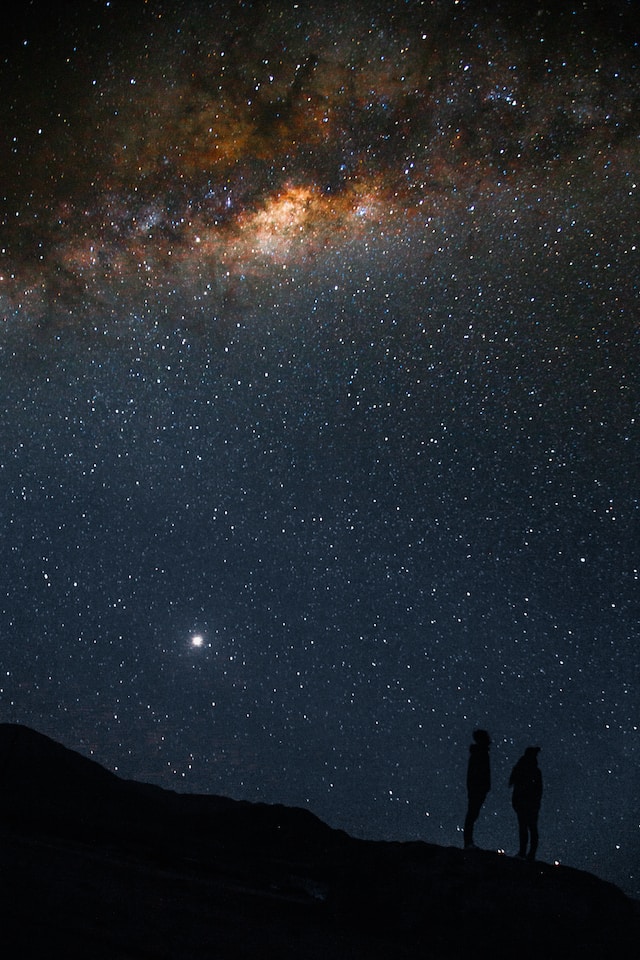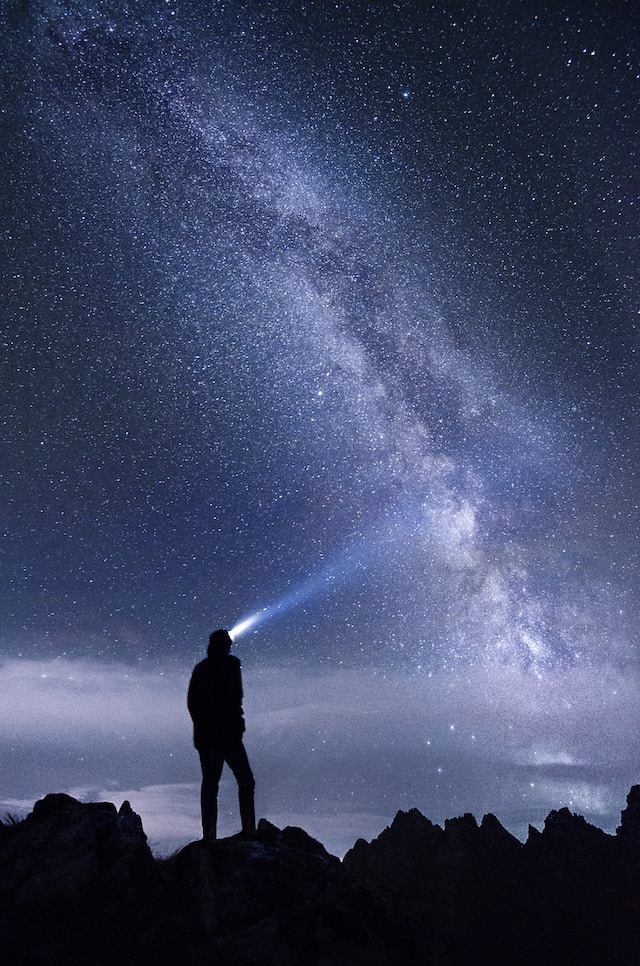
As you gaze up at the night sky, there is a sense of wonder that comes over you. The vast expanse of space, the twinkling of stars, and the majesty of the planets all seem to speak to something deep within us. Perhaps it is the mystery and beauty of the universe that draws us in. Or maybe it is the feeling of being connected to something larger than ourselves. Whatever it is, there is no denying that astronomy has a way of illuminating our inner lives as well as the cosmos. But what if we could take our understanding of the universe even deeper? What if we could use the practice of meditation to enhance our appreciation of the stars? Combining meditation and astronomy may seem unusual, but there are many benefits to be gained from it.
Mindfulness and Focus in Stargazing
In the world of stargazing, there is a constant need for focus and attention to fully appreciate and understand the wonders of the cosmos. By incorporating mindfulness techniques into our observation of the stars, we can enhance our ability to truly connect with the universe.
Cultivating Present-Moment Awareness
When we engage in stargazing, it is easy for our minds to wander, becoming lost in the vastness of space or distracted by everyday thoughts. However, by cultivating present-moment awareness through mindfulness, we can bring our attention back to the here and now.
- Take a few moments before stargazing to ground yourself in the present. Close your eyes, take deep breaths, and let go of any lingering thoughts or concerns.
- As you begin observing the stars, gently remind yourself to stay present and bring your attention back to the celestial wonders whenever your mind starts to drift.
Enhancing Perceptual Clarity
The practice of mindfulness allows us to sharpen our senses and heighten our perception of the night sky, enabling us to notice even the most intricate details.
- Pay close attention to the colors, shapes, and patterns of the stars and constellations. Observe how they sparkle and seem to twinkle in the darkness.
- Notice the subtle changes in brightness or movement of celestial bodies over time, deepening your understanding of their natural rhythms and cycles.
Developing Patience and Resilience
Stargazing requires patience and resilience, as we often have to wait for certain celestial events or endure challenging weather conditions. Mindfulness can help us cultivate these qualities, allowing us to appreciate the journey, rather than solely focusing on the outcome.
- Practice acceptance and non-judgment when faced with unfavorable conditions. Instead of becoming frustrated, view each moment as an opportunity to practice patience and observe the ever-changing nature of the universe.
- Embrace the process of stargazing as a meditative practice in itself. Allow yourself to be fully present, surrendering control and surrendering to the beauty of the cosmos.
Creating Meaningful Connections
Mindfulness can bring about a deep sense of interconnectedness, allowing us to feel a profound connection to the stars and everything they represent.

- Reflect on the vastness of the universe and your place within it. Recognize that you are a part of this grand cosmic tapestry, interconnected with everything that surrounds you.
- Consider the contemplative nature of stargazing and how it can lead to moments of self-reflection, awe, and gratitude for the wonders of existence.
Deepening Connection with the Universe
In our quest to deepen our connection with the universe, the combination of meditation and astronomy offers a unique opportunity to explore the wonders of existence on a profound level. By tapping into our inner selves while observing the celestial bodies, we open ourselves up to a deeper understanding of the universe and our place within it.
Contemplating the Cosmos
As we gaze up at the night sky, it is natural to be filled with a sense of wonder and awe. By incorporating meditation into our stargazing experience, we can delve even deeper into these emotions and contemplate the vastness and mystery of the cosmos.
- Find a comfortable spot under the starry sky and take a few moments to settle into a state of relaxation. Close your eyes and let the sounds of nature and the night wash over you.
- As you open your eyes, allow yourself to fully immerse in the beauty of the stars. Reflect on their distant nature and the countless galaxies that exist beyond our comprehension.
- Let your mind wander and ponder the questions that arise: Are we alone in the universe? What secrets does the cosmos hold? Embrace these inquiries and let them guide you on a journey of introspection.
Connecting with Celestial Rhythms
One of the most fascinating aspects of astronomy is the recognition of the intricate rhythms and cycles that govern the celestial bodies. By cultivating mindfulness, we can deepen our connection with these rhythms and align ourselves with the natural flow of the universe.
- Observe the movements of the stars and planets, noticing their patterns and shifts. Allow yourself to become attuned to their cosmic dance, feeling a sense of harmony and unity with their movements.
- Engage in breath-awareness meditation while observing the night sky. Breathe in sync with the ebb and flow of the universe, feeling a deep connection with the subtle rhythms that surround us.
- Reflect on the interconnectedness of all things. Recognize that just as the planets and stars are interconnected in the cosmos, so too are we connected to everything around us. Let this understanding deepen your sense of belonging and purpose in the universe.
Harnessing the Power of Synchronicity
As we merge the practices of meditation and astronomy, we open ourselves up to the phenomenon of synchronicity – meaningful coincidences that align the inner and outer worlds.
- Notice the synchronicities that occur during your stargazing sessions. It may be a shooting star at the exact moment of an insightful realization or the appearance of a constellation tied to a personal memory or significant event.
- Reflect on the messages and symbols that present themselves to you during these moments. Allow your intuition and inner wisdom to guide you in interpreting their meaning.
- Embrace these synchronicities as reminders of the interconnectedness of everything and the profound ways in which the universe communicates with us. Use them as catalysts for personal growth and self-discovery.
Reducing Light Pollution and Finding Dark Sky Spots
In our modern world, light pollution has become a significant issue that obstructs our ability to fully appreciate the wonders of the night sky. However, by taking steps to reduce light pollution and seeking out dark sky spots, we can enhance our meditation and astronomy experiences. Here are some practical tips to help you navigate through the glow of urban environments and find truly dark skies for optimal stargazing and mindfulness.
Understanding Light Pollution
Light pollution refers to the excessive or misdirected artificial light that illuminates the night sky, making it difficult to see stars and celestial objects clearly. Understanding the impact of light pollution is essential when seeking out dark sky spots for meditation and astronomy.
- Learn about the different types of light pollution, such as skyglow, glare, and light trespass. Awareness of these terms will help you identify and mitigate these sources.
- Educate yourself about the negative effects of light pollution on wildlife, ecosystems, and human health. This knowledge can deepen your commitment to reducing light pollution.

Reducing Light Pollution at Home
While we cannot control all sources of light pollution, there are steps we can take to minimize it in our own homes. Creating a dark sky-friendly environment allows for better stargazing experiences and enhances the impact of meditation.
- Install outdoor lighting fixtures that are fully shielded and directed downward, minimizing light scatter. Use softer, warm-color LED bulbs that emit less blue light.
- Use curtains or blinds that effectively block out light from windows and prevent light leakage outside. These measures not only promote better sleep but also reduce light pollution in your immediate surroundings.
- Support local light pollution ordinances and advocate for responsible outdoor lighting within your community. By raising awareness and encouraging others, you can contribute to reducing light pollution on a larger scale.
Finding Dark Sky Spots
To fully immerse yourself in the beauty of the night sky and engage in a meditative stargazing experience, it’s important to locate areas with minimal light pollution. Finding dark sky spots is an exciting endeavor that can open up a whole new world of celestial wonders.
- Research designated dark sky parks and reserves in your region or even further afield. These protected areas have restrictions on artificial light, allowing for pristine stargazing conditions. Plan a trip to these locations for a transformative meditation and astronomy experience.
- Seek out areas with a high elevation, away from urban centers, and shielded from major light sources. Mountains, deserts, and rural areas often offer superior darkness and clearer views of the night sky.
- Utilize online resources and apps dedicated to mapping light pollution levels worldwide. They provide light pollution maps that indicate areas with lower levels of artificial light. These tools can guide you to find nearby dark sky spots that are easily accessible.
Combining meditation and astronomy holds immense potential for deepening our understanding of the universe and nurturing our inner selves. By reducing light pollution and actively seeking out dark sky spots, we create an environment that allows for profound stargazing experiences and facilitates a stronger connection with the cosmos. Embrace the journey of finding these dark sky oases and savor the transformative power of meditative stargazing.
